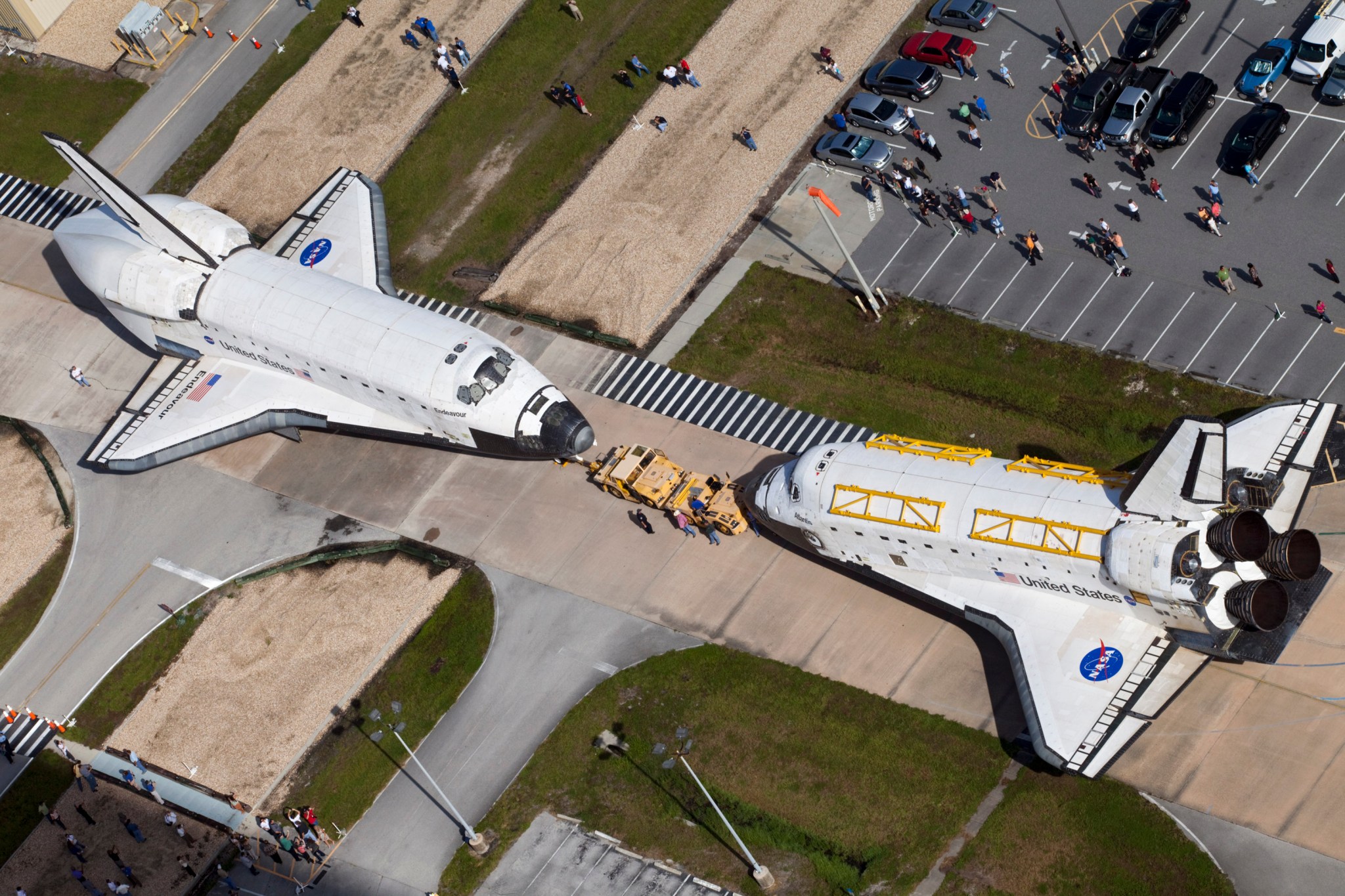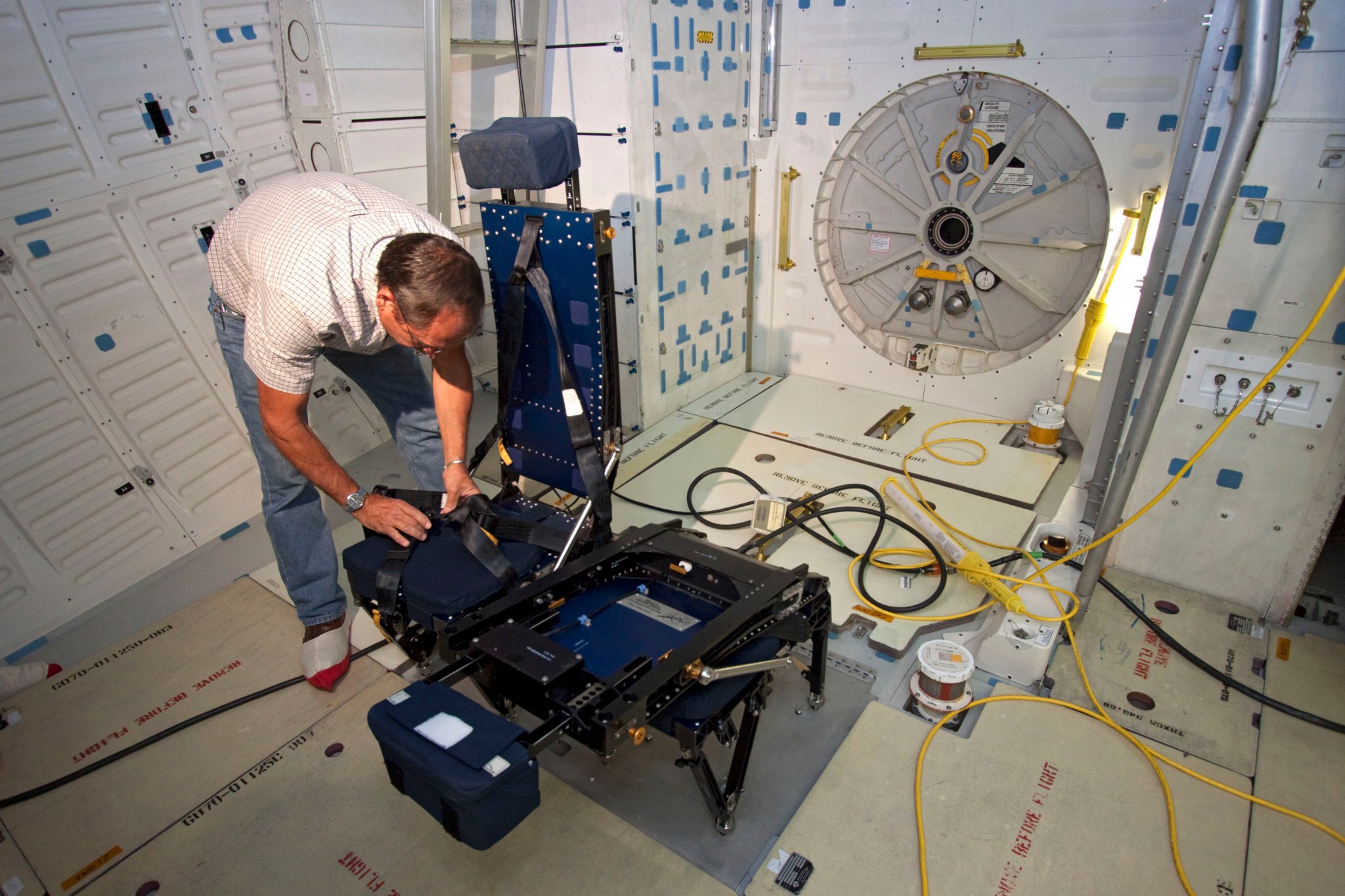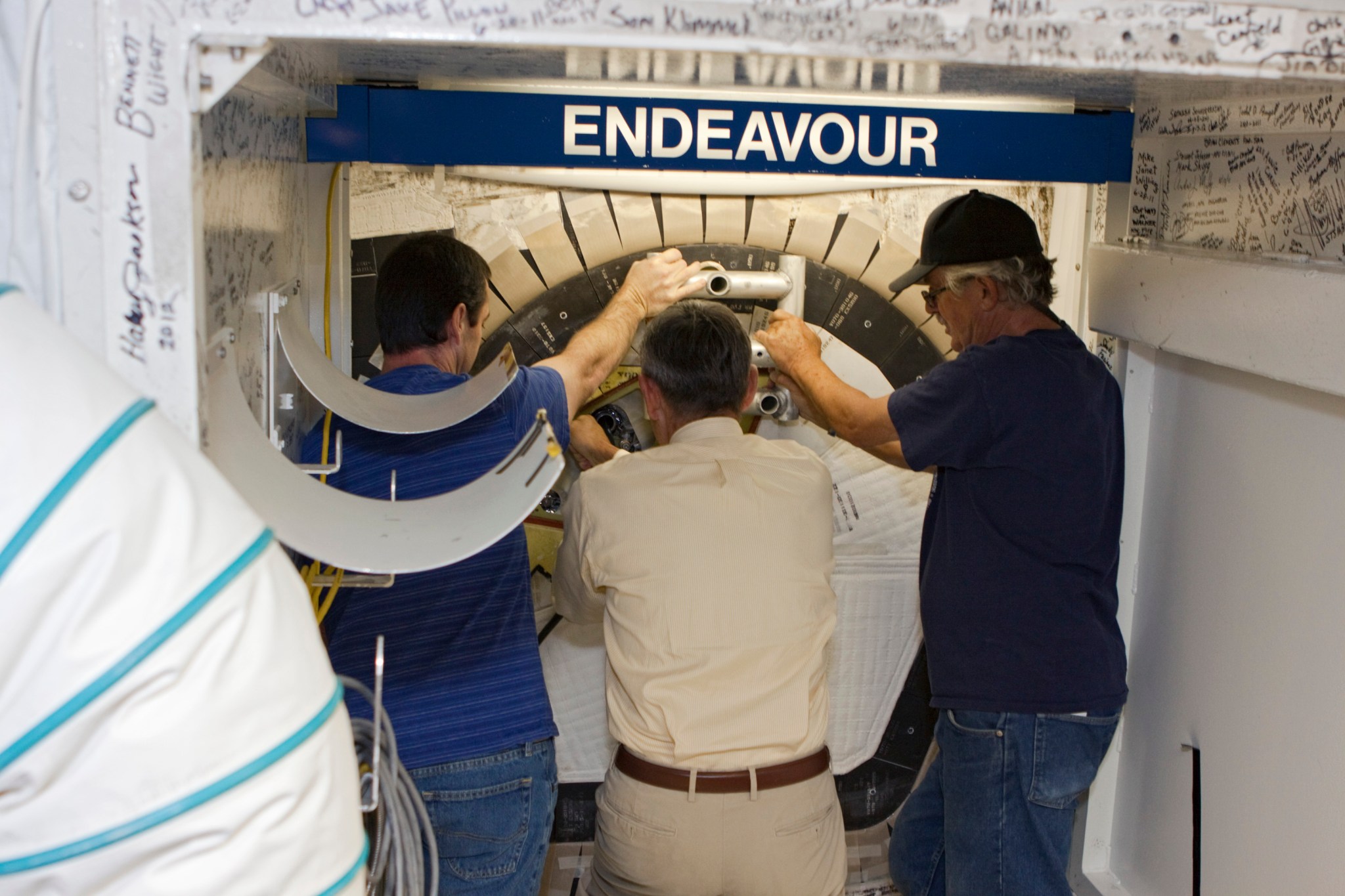With its hatch closed one final time and a transfer to the Vehicle Assembly Building, or VAB, the space shuttle Endeavour is a step closer to its departure from the Kennedy Space Center to its new mission of inspiring future generations.
From STS-49 in May of 1992 until STS-134 in May 2011, Endeavour’s crews completed 25 missions, flying 122,883,151 miles, totaling 299 days in orbit. The last orbiter to enter the fleet, Endeavour’s first crew rescued an Intelsat satellite. Its final mission delivered a key component to the International Space Station.
The orbiter now is being readied for a mid-September ferry flight to California for display at the California Science Center in Los Angeles. It will represent the shuttle program’s legacy for years into the future.
“Endeavour’s preparations have gone extremely well,” said Stephanie Stilson, NASA’s flow director for Orbiter Transition and Retirement. “Since its last flight, we have been de-servicing the vehicle instead of re-servicing it.”
The work to de-service or decommission the orbiter has included removing containers that once held toxic propellants such as hydrazine and oxidizers and ensuring all dangerous commodities have been completely drained.
“We’ve met all the (schedule) milestones and completed the work needed for the ferry flight,” Stilson said.
One of those major steps took place in Bay 2 of the Orbiter Processing Facility, or OPF, on Aug. 10. Kennedy Space Center Director Bob Cabana joined United Space Alliance, or USA, technicians Gary Hamilton and Joe Walsh in sealing Endeavour’s hatch. Less than a week later, Endeavour swapped places with Atlantis, moving into the VAB.
In the OPF Atlantis will continue preparations for its move, later this year, to the Kennedy Space Center Visitor Complex.
“For years we completed closeouts for flight, now we are closing it out for a museum,” said Bobby Wright, a senior aerospace technician with USA, as the final preparations were taking place to close out Endeavour’s crew module. “When we closed out an orbiter at the pad, it was crowded with the astronaut seats and mission equipment, especially on the middeck.”
The final closeout of the crew module was handled as carefully and methodically as it would have been for a mission to space.
A USA Quality inspector took close-out photographs. Technicians removed ground support equipment such as ladders leading to the flight deck. Air hoses and electrical cables also were pulled out. After one last check of the tool cabinet to ensure nothing was left inside, time came to close the door on an important part of America’s efforts to utilize low Earth orbit.
Appropriately, the last person out of Endeavour was a former astronaut — Bob Cabana. He commanded Endeavour on one of the most crucial missions of the shuttle’s 30-year history when the first American-built element was delivered to the space station in 1998.
“Thanks, great job,” said Cabana as he expressed appreciation to all those working the closeout.
“It’s definitely different today,” Wright said. “For flight we had to carefully make sure everything was in place for a mission. Today we are making sure everything is secured for Endeavor’s flight to the museum in California.”
On Aug. 16, Endeavour and Atlantis switched places. After Endeavour was backed out of Bay 2 of the OPF and Atlantis was moved out of the VAB, both shuttles stopped outside for a “nose-to-nose” photo opportunity. Scores of Kennedy employees and news media reporters were on hand to take pictures during the activity.
“We’ll move Endeavour to the Mate-Demate Device on Sept. 14 for the two-day process of mounting it on the Shuttle Carrier Aircraft,” Stilson said.
The schedule calls for Endeavour to be mounted atop the Shuttle Carrier Aircraft, or SCA, a specially modified Boeing 747, to fly across the country. Weather permitting, Endeavour should arrive at Los Angeles International Airport on Sept. 20, spending a few weeks at a United Airlines hangar undergoing preparations for transport and display.
“We have an off-load team of about 40 NASA and USA people who will go to Los Angeles about three weeks ahead to prepare the off-load site,” Stilson said.
Once Endeavour is removed from the SCA, it will be moved into the hangar and the team will complete preparations for display. The work will include removing the aerodynamic tail cone and configuring the replica main engines and installing the orbital maneuvering system nozzles.
Plans call for Endeavour to travel through Los Angeles streets on a 12-mile trip from the airport to the California Science Center, arriving in the evening of Oct. 13. In its new home, Endeavour will be on display along with the Space Shuttle Program’s history to inspire future generations.



























